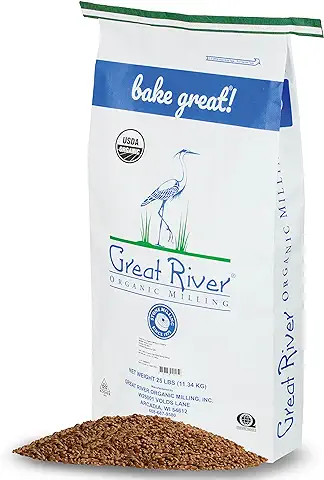Whole wheat is a healthy food for kids, for adults and for your entire family. When eating 100% whole wheat foods don’t forget to include in your menu; whole wheat bread, whole wheat crackers, whole wheat pastas, whole wheat tortillas, whole wheat rice, whole wheat cereals and whole wheat flours.

Whole wheat is a very healthy food. It is much healthier to eat than it’s counterpart of refined white flour products. The main reason why processed white flour is not as healthy is because all of the vitamins, minerals and fiber that makes whole wheat such a healthy food, is eliminating and stripped out when making white bread, white flour, white tortillas, white rice, white crackers, and white pasta. Yes, some of the nutrients are added back in as a result of the fortification process, but the nutritional value decreases drastically even with fortification.
Be Careful Shopping For Whole Wheat in Stores
The challenge is that many of the foods that we think are “whole wheat” are not.
The reason this occurs in my opinion is that 100% whole wheat bread is more expensive to produce. Therefore, if a company can produce bread that look like whole wheat, then the profits are higher and no one seems to know otherwise. Yes, this is cynical, but probably true.
I was amazed to discover that some of the so called “whole wheat breads” in the stores are actually white bread dyed to look like wheat bread.
The Different Names That Are Given To Whole Wheat Products That Are Not 100% Whole Wheat
I recently looked at the ingredients of some cookies that were being sold in a health food store. One of the ingredients was “unbleached wheat flour.” What was unbleached white flour I thought? Upon research, I discovered this too was another deceptive name for white flour that was renamed wheat.
Fortified unbleached wheat flour is another name that makes it look like it is whole wheat when it isn’t. It is merely white flour that was stripped of all it’s vitamins and minerals and then a few were added back in after processing.
When shopping for whole wheat products, look for the word WHOLE in the ingredients. If this word is not there, then the product you are buying does not use 100% whole wheat. You will be amazed at how many products look like they are, but they are not.
What Is Whole Wheat Really and Why is This Such a Healthy Food?
If you select 100% whole wheat products, that means that the flour that is used is whole, and there are no nutrients that are sacrificed when making the flour. The bran, germ and the endosperm will remain in your foods all filled with excellent fiber, manganese and magnesium.
Whole wheat flour that is extremely healthy for your kids and your families.
100% whole wheat foods help maintain a healthy weight, it helps curb hunger and supplies your body with nutrients that help increase your energy levels. Whole wheat is more satisfying to eat and doesn’t require as much food to fill you up.
Have you ever eaten pancakes made from white flour? You can eat a whole stack of them and still feel cravings for more food. Try whole wheat pancakes and notice that you might be able to only eat 1 or two of them and feel quite satisfied.
Whole wheat foods also provide wonderful fiber to keep your system regular and to be healthy. Fiber helps your body digest food slower, and decreases the glycemic index if you combine whole wheat with sugars.
Whole wheat is also a good source of calcium, iron, fiber and minerals like selenium.
- Anti Cancer
- Colon cancer
- Breast cancer
- Asthma
- Heart Attacks- Harvard researchers decided to look at the effects of cereal consumption on heart failure risk and followed 21,376 participants in the Physicians Health Study over a period of 19.6 years. After looking at several different factors (age, smoking, alcohol consumption, vegetable consumption, use of vitamins, exercise, and background of heart disease), they discovered that men who ate a daily morning serving of whole grain (but not refined) cereal had a 29% lower risk of heart failure. Arch Intern Med. 2007 Oct 22;167(19):2080-5.
- High Blood Pressure
- Cholesterol
- Asthma
Increasing consumption of whole grains and fish could reduce the risk of childhood asthma by about 50%, suggests the International Study on Allergy and Asthma in Childhood (Tabak C, Wijga AH, Thorax).
An Exciting Changing Mindset About Whole Wheat
It is great news that people all of the world are becoming more informed about what they are feeding their families.Overall, last year there was a 3 percent decrease in sale of white breads, where wheat bread increased by 5%.
Packaged wheat bread outsold white bread, according to Nielsen Co. For the 52 weeks ended July 10, wheat bread sales increased 0.6 percent to $2.6 billion, while white bread sales declined 7 percent to $2.5 billion.
Tips on Cooking With Whole Wheat
- Whole wheat flour should be refriedgerated or put in the freezer. Remember, whole wheat flour is a living food that can easily go bad and also bugs will have interest in the nutrients. (Interestingly enough, white flour does not interest bugs.; which does not need to go in the refrigerator.
- You can freeze wheat flour and use it without any change in the texture. I keep all my whole wheat flours in the freezer and take out right when I need them.
- If you use whole wheat flour in your baking, you will need more liquids.
- Don’t be afraid to use all whole wheat flour in cookies, cakes, pancakes and breads. So many recipes call for 1/2 white, 1/2 whole wheat. In my opinion this is wasted calories and wasted nutrients. I am backing with 100% whole wheat and enjoying delicious muffins, cakes, cookies, pancakes and more.
- You can substitute 1/2 of whole wheat flour in just about any recipe that calls for white flour. If you do use white flour, make sure to use UNBLEACHED white flour. Why eat a food that has gone through a bleaching process?
Whole wheat pastry flour is particularly good for baking or using in breakfast items like pancakes.


